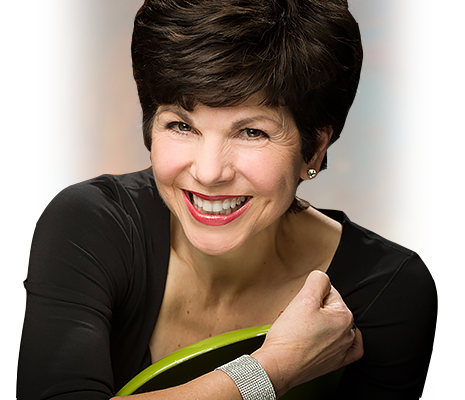
I’ll never forget a meeting that I attended with a digital marketing company based in Connecticut. I was meeting with the two partners to discuss the possibilities of joining their team. Within ten minutes of sitting down, I could see the tension between the two partners rise at an alarming rate. At one point they both threw F-bombs at each other. The aggression and negative energy in the room was palatable. I actually felt physically under threat just being in their presence. My decision was made before I left the room – there is no way in the world I would ever work with them, for them, or on their behalf.
One of the partners followed up with me a few days later to see what I thought. I told him that I was surprised by how they treated each other in the meeting. He explained casually that it didn’t mean anything, they had great respect for each other, but this was just their way of working out issues. I thought to myself, if this is normal, just imagine how they act during times of high stress. With leaders who acted like this, the company culture would most likely be inharmonious at best, toxic at worst. This would not be a place to entrust my time and talent.
What creates disharmony in the workplace?
This question could be a blog in and of itself. I can think of so many things that disrupt the state of peace in the workplace. Here’s just a few that come to mind:
- Constant, unrelenting stress
- Sexual harassment and misconduct
- Meeting mania, back to back unproductive meetings
- Stereotypes, unconscious bias, bigotry and the lot
- Bullies and abusive leadership practices
- Exclusion – the feeling of being ignored, left out, unheard/unseen, or disregarded
- Demanding work schedules that don’t allow people to take breaks or get fresh air
- Unfair wage practices, discrimination, inequality, institutional racism
- Junk food, excessive amounts of sugar and caffeine and lack of healthy options
- Backstabbing, people pushing their own agendas at all costs
- Avoidance or lack of skill to resolve everyday conflicts
- Lack of listening skills (most people think they are great listeners, but they are not)
- Holding grudges
- Name calling
- Lack of natural light, and unattractive, uninspiring work spaces
- Use of language that reinforces war and violence (e.g., “We are going to kill the competition.”)
Oh my gosh, I think I just described the current White House administration. Just kidding. Okay, let’s add jabs, inappropriate jokes, and passive aggressive behavior to the list above. What else can you think of that disrupts your peace at work? Please share your ideas in the “Leave Your Reply” section at the end of this blog.
Getting our arms around peace
Because peace is an ambitious goal and there are so many different ways to approach it, I have gathered advice and tips from a number of well-respected experts. Please forgive the length of this blog post, but keep reading until the end, as I guaranteed there a few ideas that you and your organization need to implement right now to build more peace into your workplace.
P.S. you may notice that all of my expert contributors in this blog are women. I apologize for the lack of gender diversity in this line up. I will strive in future blog posts to invite more diversity of thought. But I was on a big deadline to get this to you. Guys, if you have something to add to the discussion of Building Peace in the Workplace, I’d be happy to consider sharing your thought-leadership in a follow up piece. Contact me.
Six Strategies for Creating More Peace and Harmony in Your Workplace and Life
1. Replace Judgement with Curiosity

Here’s a tip from Cynthia Clay, a recognized expert in the field of integrating classroom and e-learning experiences for the most effective and lasting training results. She is CEO of NetSpeed Learning Solutions based in Seattle, WA. She is also a professional speaker, author, and virtual learning leader.
Here is what Cynthia had to say about building peace into the workplace:
“I have found that entering a difficult conversation with curiosity allows me to be more open with another person. Rather than jumping to conclusions about them, their personality, or their point of view, I try to suspend judgment and just listen. If I find myself sitting in judgment, I silently ask myself, when have I done something similar? Realizing that I’ve been guilty of whatever I may be judging someone else for doing, instantly leads me to feel more compassion for them and for myself. I feel more connected to them as a result.”
Cynthia also recommends that we accept personal responsibility and stop playing the blame game at work.
“It’s tempting to blame the slackers, the bullies, the whiners, and others for impeding your ability to get the job done. But blaming and attacking others won’t produce the results you want. You can’t force your peers (or your boss) to change. In fact, there is only one thing you can change about these situations: your own behavior.”
More Information:
- Learn more by participating in this free webinar “Strategies to Reduce Conflict in the Virtual Workplace” on March 13, 2019 from 1-2pm EST
- Additional insights can be found in Cynthia’s free eBook – Peer Patterns: Nine Behavior Types and How to Work with Them
2. Quiet the Mind with Yoga and Mediation

To improve my sense of wellbeing, I enjoy taking yoga classes. This is where I discovered the power of meditation to calm my over-active mind and restore my sense of peace and harmony. I find yoga helps me focus on my “feeling body”rather than the “thinking mind”–which seems to be where most conflict and anxiety arises from.
Abbey Garcia, is a certified yoga instructor, who teaches at the YMCA in Greenville. She also teaches BreweryYoga, inviting people to enjoy yoga practice with her at a local craft brewery, and then enjoy a beer together after class. That sounds like fun…
Abbey ends her yoga classes with a final relaxation pose known as “Savasana” (although referred to as corpse pose or deadman’s pose). She gently guides us through this pose with beautiful words that I have come to cherish. I asked her if she would mind sharing them in my blog post, and she said Namaste. I took that as a YES, but it really means “The light in me honors the light in you.”
Here is what Abbey had to say about building peace in the workplace:
“At the end of a yoga class (or really after any type of workout, or simply anytime you need a moment to yourself), rest in Savasana, your final relaxation pose. Find a comfortable position, traditionally lying flat on the earth – arms out and palms up, legs long and toes splay out. Close your eyes and relax your face – soften the corners of your eyes. Soften the corners of your mouth. Allow your heart to be open and shoulders rooted into the earth. Your breath back to its natural rhythm, but still mindful of its presence, that beautiful life-force within you. Be at ease. Free from obligations and expectations. Free from judgement and criticism. Give yourself permission to rest. Give yourself permission to let go. Give yourself permission to just be.
“Your breath is your greatest tool and your best guide. Follow it.”
~ Abbey Garcia
When your mind begins to wander, bring it back to your breath. Or repeat this mantra: “Breathing in, I am here now. Breathing out, I let go.” Stay in Savasana for at least 5 minutes, preferable 7-9 minutes.
Slowly wake the body up. Then roll to your right side to rest in fetal position – symbolic of a rebirth; symbolic of an unfiltered love toward oneself and an unfiltered love toward the world.
Rise to a comfortable seated position. Inhale arms up to sky. Bring palms together and bring them to your forehead for compassionate thoughts; to your lips for respectful communication; and to your heart for peace, love, and gratitude. May this practice serve to heal you and all of those around you. May the peace that you found here today help others to feel peace just being in your presence. Take it with you and breathe with light and love. Leave this space knowing that you are loved and all that is within you is beautiful. Namaste.”
More information:
- Watch this peaceful one-minute video on the Savasana pose
- Follow Abbey Garcia on Instagram @abbey.onelove
3. Practice Mindfulness

This tip comes from my dear friend and colleague, Jackie Johnson who coaches leaders who want to live and lead more mindfully. She is a professional certified coach and owner of Choice Coaching and Consulting, LLC, based in Connecticut. A Certified Mindfulness Teacher (CMT-P), mindfulness is both Jackie’s passion and area of leadership expertise.
Here’s what Jackie had to say about building peace into the workplace:
“As the pace of work and life continue to accelerate, practices of meditation and mindfulness enable us to increase the gap between impulse and action. We can create space before sending an email that may not be received as we intend or before reacting in a moment of anger. Through the practice of mindfulness we become aware of our judgements and can be more discerning/thoughtful in our responses.
Intentionally bringing our attention back to an object over and over, produces structural changes in the brain and helps to counter the forces of distraction
Multi-tasking is a misnomer, it’s really switching, science tells us that it decreases productivity by up to 40% and decreases IQ by 8-10 points.”
More Information:
- Check out Jackie’s coaching program for Mindful Leadership
- Check out mindful offerings at the Harvard Pilgrim Health Care where Jackie teaches
- Give yourself a well deserved mindfulness retreat at the Cooper Beach Institute where Jackie also teaches
- Enjoy one of Jackie’s favorite quotes:
“Between stimulus and response, there is a space. In that space lies our freedom and our power to choose our response. In our response lies our growth and our happiness.” ~ Victor Frankl, Austrian neurologist and psychiatrist as well as a Holocaust survivor
4. Set Boundaries to Reduce Stress

What’s the connection between peace and stress? How about stress and the lack of personal boundaries? Elisa Ortiz, who started her career as a paralegal, has since developed a passion for understanding credit and personal finance which she now shares through the content she creates.
Here’s what Elisa had to say about building peace in to the workplace:
“Setting boundaries is crucial in the modern workplace. With increased expectations of being available 24/7, it’s important to have a separation between work and personal time. Everyone’s situation is different, but with more and more people going freelance and working remotely the lines are blurred more than ever before. Luckily, there are a few ways to create boundaries for yourself, so there’s something that will work for everyone!
- Remove your work email from your phone. Or if you must have it, put all work apps in their own folder and on their own page of your home screen so that you’re not tempted to check them.
- Make your bedroom a tech-free space. Winding down at night without technology is a great way to improve your sleep.
- Block off time for personal events in your work calendar. Have a zumba class every Thursday right at 5:30? Put it on your calendar so no one can schedule a meeting with you during that time. If you don’t want people knowing what you’re up to, just put “Hold” or “Personal” as the event title.
All of these things are not only important to your health, but they’ll also boost your productivity and performance at work. It’s a win-win! Don’t let the misconception that working long hours always means you’re working hard. Taking a break is important for letting your mind rest and come back rejuvenated. There’s a reason people have more aha moments in the shower! If you’re having trouble finding the time to relax, read up on the cost of stress to convince yourself (and maybe your boss) that de-stressing is crucial for your wellbeing and the quality of your work.”
- Read the blog post – How reducing stress can save you–and your employer–money
5. Be an Intentional Inclusionist®

Dr. Nika White, renowned expert in the field of diversity and inclusion, coined the term “Intentional Inclusionst.” In fact, she felt so strongly about it, she wrote a book about it and speaks to audiences around the globe about it.
Here’s what Nika had to say about building peace in the workplace:
“An important reason why I coined the term “intentional inclusionist” is because intentionality is key to diversity and inclusion. There’s a lot of energy around D&I right now, but that momentum will be wasted if we don’t work to address issues in a deep and thoughtful manner.
But that’s the key: thought. Intentionality begins with awareness, but mindfulness is how we become aware. Mindfulness, then, creates the space in which intentionality can truly blossom.
We have to be mindful of the ways in which our brains work for or against us in our diversity and inclusion efforts. If we can manage ourselves, then we can manage others. Even if we are steeped in D&I best practices and case studies, all of that information could potentially pass through a faulty filter. We all record misinformation about people who are different than we are. Human beings regularly adopt ideas without even being aware of it. We all have habitual actions or responses that we don’t think twice about.
Becoming an Intentional Inclusionist™ means recognizing that bias and prejudice do not require bad intentions. At the same time, a lack of intentionality can lead to homogeneity and exclusion. It’s easy to approach a situation with an unconscious bias when we are simply unaware.
“Compassion helps us in our journey to become intentionally inclusive.
~ Dr. Nika White
Mindfulness, on the other hand, helps interrupt those automatic responses. It causes us to take inventory of our attitudes and behaviors – and those of the people we aim to influence – allowing us to better recognize, understand, and address barriers to inclusion. This requires emotional intelligence, situational awareness, and intentionality.
And finally, there is compassion. Compassion helps us in our journey to become more intentionally inclusive. After all, what better way to understand the plight of the one left out? The one that feels like he/she does not belong. The individual who does not feel represented, valued or accepted. There are benefits to compassion for both those on the giving and receiving end and even those who are witness to it. It makes the world – and the workplace – feel like a friendlier place to be.”
More information:
- Read Nika’s blog post “What to Do When Inclusion Sparks a Backlash Online”
- Read Nika’s blog post “The Heart of Suffering Together: How to Practice Compassion”
- Read Nika’s blog “Why you Should Change Your Mind About Inclusion”
- Read the book The Intentional Inclusionist by Dr. Nika White
6. Find Common Ground

Dr. Jessica Shryack will be one of the keynote speakers at the Peace and Conflict Resolution Conference held on Friday, May 3, 2019 in Greenville, South Carolina. Jessica will be leading an interactive session called “Living Room Conversations: an experimental session in civil discourse.” You’ll want to be there!
Jessica is an expert facilitator, keynote speaker and leader in higher education. In my opinion, she is a rising star, and someone that could add tremendous value to your workplace as a consultant. She had a lot to say about building peace in the workplace. It was hard for me to cut her content into just one paragraph. So I decided to share all of what she sent to me. Be sure to click on the embedded links for more insight and information.
Here’s what Jessica had to say about building peace in the workplace:
“I have worked in both the diversity, equity and inclusion and organizational development areas on a college campus for the past five years. Over that time, I have seen conflict arise (or, more often, simmer) between many types of people and teams: an individual employee and a manager; staff and administrators; siloed divisions. While conflicts eventually result in some (often non-ideal) outcome, a systematic method for dealing with conflict on a daily basis remains elusive. Conflict that does not break out into policy-invoking conflict resolution processes nevertheless can have a drag on an organization. Imagine 25 or 250 relatively minor conflicts that, unresolved over the long-term, impact and amplify each other. It’s a wonder any of us gets work done!
One of the techniques that I and colleagues have used for working through the beliefs and experiences that can cause interpersonal conflict is called Living Room Conversations (LRC). We have used this methodology to address flashpoint issues like race and privilege, specifically. But there are multiple ways that aspects of LRCs can be used to advance organizational development.
First, organizations may want to address issues like gender relations, mental health or the future of work. Luckily, conversation guides on these topics already exist and because they are free, could be used in any organization interested in having open dialogue. The only thing that’s needed is participants, space and time.
Second, the community agreements encourage behaviors like showing respect for differences, maintaining curiosity and suspending judgment. Research shows that techniques like this can interrupt our automatic biases. Often, if people are allowed the time, permission and structure to resolve a conflict, they will. Letting emotions simmer, on the other hand, can affect employees’ physical and emotional health, which ultimately impacts organizational functioning.
Using the LRC process and the community agreements as a stand-alone resource require no specialized training or facilitators (although a facilitator may be useful depending on the scope of the conflict). For example, as soon as conflict arises, any employee could suggest use of the agreements to “bring down the temperature” of all parties, making it more likely that creative solutions to a conflict can be found.
According to its co-founder, Joan Blades, LRCs can be considered a domestic peace-building initiative. When people in a conflict can listen respectfully to, adopt a curious attitude about and search for common ground with others, they not only prevent negative emotions and behaviors from impacting their health. They can also help build more peaceful organizations.”
More information:
- Watch the TED talk with Joan Blades and John Gable – Free Yourself From Your Filter Bubble
- Download free discussion guides at the Living Room Conversations website.
- Register to attend the Peace and Conflict Resolution Conference on May 3, 2019 in Greenville, SC
Peace is Possible
We can’t avoid conflict. It is a natural part of life. But peace is possible if we put the energy and focus into building it in our workplaces and our daily lives. The six strategies presented by our six expert are very doable, and worth doing. But don’t expect your workplace to do it for you. As the song goes, “Let there be peace on earth, and let it begin with me.” I encourage you to adopt one of these peace strategies and practice it for 30 days. Then email me to let me know how your experience at work has changed for the better!
- replace judgement with curiosity
- quiet the mind with yoga and meditation
- practice mindfulness
- set boundaries to reduce stress
- be an Intentional Inclusionist®
- find common ground
Be peace. Do peace in 2019.

